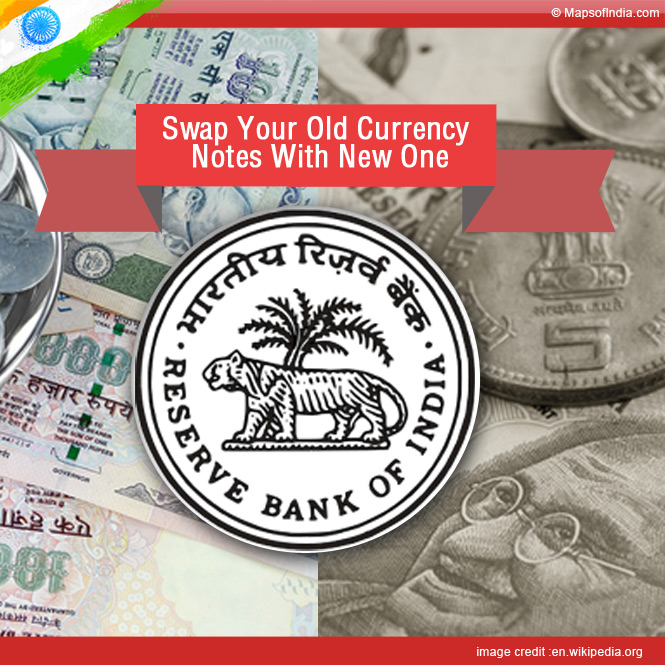From 1st April 2014 currency note issued prior to 2005 will not circulate in the market. The decision to withdraw currency notes has been taken by the Reserve Bank of India (RBI) to amplify security. All public and private banks have been directed to exchange the currency unconditionally till 30th June 2014. All public and private banks will have a separate dedicated counter for exchanging the currency. Though transactions will look unconditional but any large-ticket transaction will be reported to the RBI. Exchanging more than 10 pieces of Rs 500 and Rs 1,000 notes after this date would require an identity and address proof. The financial services industry believes that that was the period with maximum number of counterfeit currencies. Notes printed before 2005 does not have a year printed on their back but currency notes printed after 2005 do have a year printed on the backside.
Experts and economists believe that currency hoarders are going to have a tough time because if they have backdated currency notes then after the said date such currency won’t remain as a legal tender. These have to be exchanged with the new currency notes. This decision by the RBI will bring out the black money in the market and will keep a check on fake notes. Some experts also believe that the swapping of old notes with new ones may bring down the inflation as it will affect the unaccounted currency presently circulating in the market.
People who have large sums of money are bit worried. To convert the currency they are buying gold jewelry. This has caused a meager rise in the gold price. Experts also believe that this swapping will not have any significant impact on asset prices.
But exchanging note is going to pose a big problem. Long queues will be seen in front of the banks. You need to show identity and address proof only if you are going to exchange more than 10 notes at a time and that too after a said date. There is a possibility that someone can skip this by exchanging less than 10 notes at different branches.
Speculations are also going on whether this decision of the RBI is to flush out black money before the general elections. But the Reserve Bank of India has clarified that the decision has been taken due to security. Notes prior to 2005 have less security features. The RBI governor Raghuram Rajan said that this move is not to demonetize but to replace less effective notes with more effective ones. He even said that this move has nothing to do with elections. By doing so government actually wants to rationalize the number of currency variants.
How to identify currency notes prior to 2005?
At present currency notes of denominations Rs. 5, Rs. 10, Rs. 20, Rs. 50, Rs. 100, Rs. 500 and Rs. 1,000 are printed. All the pro 2005 notes have no year marking. Post 2005 notes have year printed in the center of the bottom on the backside of the note.
So quickly exchange your old notes with new ones.
Read Also:
What is Payment Bank and How Does it Work
RBI’s Battle Against Inflation – Bonds to Check Liquidity
RBI’s Concern Over Unclaimed Funds Amounting To Rs 3,652.3 Crore In The Different Banks Of The Country
RBI reduces free ATM withdrawals in metro cities
RBI’s Rate Cut: Beginning of the End of Uncertainty in Investment and Growth
New Financial Reforms from new Governor of RBI
Modi’s Vision for Banking Industry
Investment Risks to Economy – Caution Is the Watchword for RBI
Differentiated Banking Licenses – India’s Next Milestone?





